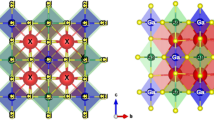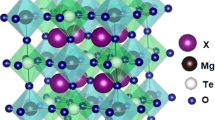Abstract—
The relevance of the efficient use of solar energy is shown as part of the solution to the problem of energy conservation and environmental preservation and the benefits of solar technologies. The problems of synthesis are considered and technological conditions are substantiated taking into account the nature of the formation of the target material. The basis for the development of solar technologies is shown in connection with the properties of the target material and the characteristics of the optical-energy system of the Large Solar Furnace (LSF). Determination of the optimal parameters of the heliostat field, the geometry of the focal zone in connection with the physical properties of the starting materials and the target material is described. The proposed methodology is presented by the example of obtaining Bi/Pb nanostructured precursors and homophase layered ceramics with R = 0.001–0.0002 Ohm containing superconducting phases of the Bi1.7Pb0.3Sr2Ca(n – 1)CunOy (n = 3–30) series.




Similar content being viewed by others
REFERENCES
Gulamova, D.D., Zufarov, M.A., Ismailova, T.Yu., and Turdiev, Zh.Sh., Properties of fluorite-type solid solutions in ZrO2–CaO(MgO)–Gd2O3 systems synthesized on a large solar furnace, Geliotekhnika, 2005, no. 3, pp. 79–89.
Gulamova, D.D. and Uskenbaev, D.E., Influence of the composition and crystal structure of the substrate on the BSCCO texture of composition 2223 obtained under the influence of solar radiation, Geliotekhnika, 2006, no. 4, pp. 59–63.
Gulamova, D.D., Ismailova, T.Yu., Axmedov, M.X., Uskenbayev, D.E., and Turdiev, J.Sh., Properties of the oxide compound spherulites, obtained from the melt in a solar furnace, Appl. Sol. Energy, 2007, vol. 43, no. 1, pp. 51–53.
Gulamova, D.D., Uskenbayev, D.E., Chigvinadze, D.G., and Magradze, O.V., Crystallization and synthesis of HTSC of compositions 2234, 2245 in the Bi–Pb–Sr–Ca–Cu–O system based on amorphous precursors obtained by solar radiation hardening, Appl. Sol. Energy, 2008, vol. 44, no. 1, pp. 42–45.
Akhmedov, M.Kh. and Gulamova, D.D., Development and study of thermostable ceramic based on corundum, aluminium titanate, and mullite, Appl. Sol. Energy, 2008, vol. 44, no. 3, pp. 192–197.
Gulamova, D.D. and Turdiev, Zh.Sh., Properties of oxide compounds, obtained by molten phase synthesis via action of concentrated solar radiation, Appl. Sol. Energy, 2009, vol. 45, no. 1. pp. 38–44.
Gulamova, D.D., Uskenbaev, D.E., Gilbert Fantozzi, Chigvinadze, J.G., and Magradze, O.V., Phase composition and properties of superconducting ceramics based on Bi1.7Pb0.3Sr2Ca2Cu3Oy precursors fabricated by melt quenching in a solar furnace, Tech. Phys., 2009, vol. 54, no. 6, pp. 860–864.
Gulamova, D.D. and Riskiev, T.T., Properties of oxide materials synthesized in a solar furnace, Dokl. Akad. Nauk, 2014, no. 2, pp. 14–19.
Gulamova, D.D., Turdiev, J.S., Bobokulov, S.K., Bakhronov, Kh.N., and Nebesnyi, A.A., Solar technology for obtaining superconducting ceramic Bi1.7Pb0.3Sr2Ca(n – 1)CunOy (n = 3–5) and studying its properties, Refract. Ind. Ceram., 2016, vol. 57, no. 1, pp. 38–41.
Chigvinadze, J.G., Acrivos, J.V., Achimov, S.M., Machaidze, T.V., and Uskenbaev, D.E., Temperature dependence investigation of dissipation processes in strongly anisotropic high temperature superconductors of Bi–Pb–Sr–Ca–Cu–O system synthesized by using solar energy, Epitoanyag-J. Silic. Based Compos. Mater., 2009, vol. 61, no. 4, pp. 104–108. https://doi.org/10.14382/epitoanyag-jsbcm.2009.19
Urusov, V.S., Energeticheskaya kristallokhimiya (Energetic Crystal Chemistry), Moscow: Nauka, 1975.
Batsanov, S.S., Strukturnaya khimiya. Fakty i zavisimosti (Structural Chemistry. Facts and Dependences), Moscow: Dialog MGU, 2000.
Prokhorov, A.M., Alekseev, D.M., Bonch-Bruevich, A.M., Borovik-Romanov, A.S., et al., Fizicheskii entsiklopedicheskii slovar (Physical Encyclopedic Dictionary), Moscow: Sov. Entsiklopediya, 1984.
West, A., Solid State Chemistry and Its Applications, Hoboken, NJ: Wiley, 1984.
Wesche, R., Physical Properties of High-Temperature Superconductors, Wiley Online Library, 2015.
Azimov, S.A., Adilov, G.T., Suleymanov, S.Kh., Gulamova, D.D., and Riskiyev, T.T., Outlooks of usage of solar furnaces in the technology of production of high thermal resistant materials, Mod. Technol. Mater., 1984, no. 4, pp. 276–280.
Azimov, S.A., Gulamova, D.D., Suleimanov, S.Kh., and Sarkisova, M.Kh., Synthesis of aluminum titanate by melting in a solar furnace, Geliotekhnika, 1984, no. 4, pp. 11–13.
Abdurakhmanov, A.A., Kuchkarov, A.A., Mamatkosimov, M.A., and Sobirov, Yu.B., The calculation procedure of the optical-energy characteristics of mirror concentrating systems for technological and energy application, Appl. Sol. Energy, 2015, vol. 51, no. 4, pp. 301–305.
Akbarov, R.Yu. and Paizullakhanov, M.S., Erratum to: Characteristic features of the energy modes of a large solar furnace with a capacity of 1000 kW, Appl. Sol. Energy, 2018, vol. 54, no. 3, pp. 227–227.
Azimov, S.A., Akbarov, R.Yu., and Pirmatov, I.I., Calculation of the characteristics of solar power plants, Geliotekhnika, 1982, no. 3, pp. 26–32.
Akbarov, R.Yu., The program for modeling and calculating the energy characteristics of the 1000-kW Large Solar Furnace (LSF), Tashkent, Uzbekistan, DGU 04902, 2018.
Akbarov, R.Yu. and Paizullakhanov, M.S., Characteristic features of the energy modes of a large solar furnace with a capacity of 1000 kW, Appl. Sol. Energy, 2018, vol. 54, no. 2, pp. 99–109.
Gulamova, D.D., Ashimov, S.M., Chigvinadze, J.G., and Acrivos, J.V., Critical temperature of the superconducting transition of individual phases of multiphase bismuth cuprates after cooling in a magnetic field to a temperature of 77 K, Low Temp. Phys., 2019, no. 45, pp. 447–456.
Chigvinadze, J.G., Ashimov, S.M., Machaidze, T.V., Maghradze, O.V., Uskenbaev, D.E., and Donadze, G.J., Influence of the technology of synthesis of the HTSC system Bi–Pb–Sr–Ca–Cu–O on possible change of the critical temperature T c of superconducting transition, New Developments in Materials Science, Hauppauge, NY: Nova Science, 2013.
Gulamova, D.D. and Gulamov, T., Low-resistance Bi/Pb ceramics containing T c = 295–315 K phases synthesized in a solar furnace (Parkent), Khim. Khim. Tekhnol., 2020, no. 3, pp. 20–24.
Gulamova, D.D., Bakhronov, Kh.N., Bobokulov, S.Kh., Eshonkulov, E.B., and Zhalilov, D.Yu., Fundamentals of the development of technologies for the synthesis of oxide materials in the Large Solar Furnace (Parkent), Khim. Khim. Tekhnol., 2020, no. 1, pp. 3–8.
Chigvinadze, D.G., Ashimov, S.M., and Gulamova, D.D., Bi/Pb room-temperature superconducting phases T c = 291, 295 K obtained by solar energy, Khim. Khim. Tekhnol., 2019, no. 2, pp. 3–8.
Pozigun, S.A., Pan, V.M., Alekseev, V.A., Strunnikov, V.M., Kaul’, A.R., and Gorbenko, O.Yu., High-temperature superconducting materials with high current-carrying characteristics and methods for their production, Usp. Fiz. Met., 2004, vol. 5, no. 2, pp. 167–218.
Nikolo, M., Superconductivity: A guide to alternating current susceptibility measurements and alternating current susceptometer design, Am. J. Phys., 1995, vol. 63, no. 1. https://doi.org/10.1119/1.17770
Tret’yakov, Yu.D. and Kazin, P.E., New problems and solutions in the materials science of ceramic superconducting cuprates, Neorg. Mater., 1993, vol. 29, no. 12, pp. 1571–1581.
Funding
This work was carried out with financial support of the Academy of Sciences of the Republic of Uzbekistan within scientific project no. FZMV-2016-0908141350.
Author information
Authors and Affiliations
Corresponding author
Ethics declarations
The authors declare that they have no conflicts of interest.
About this article
Cite this article
Gulamova, D.D., Bakhronov, K.N., Bobokulov, S.K. et al. Fundamentals and Methodology of the Development of Oxide Material Synthesis Technologies at the Large Solar Furnace (Parkent). Appl. Sol. Energy 57, 559–564 (2021). https://doi.org/10.3103/S0003701X21060086
Received:
Revised:
Accepted:
Published:
Issue Date:
DOI: https://doi.org/10.3103/S0003701X21060086




